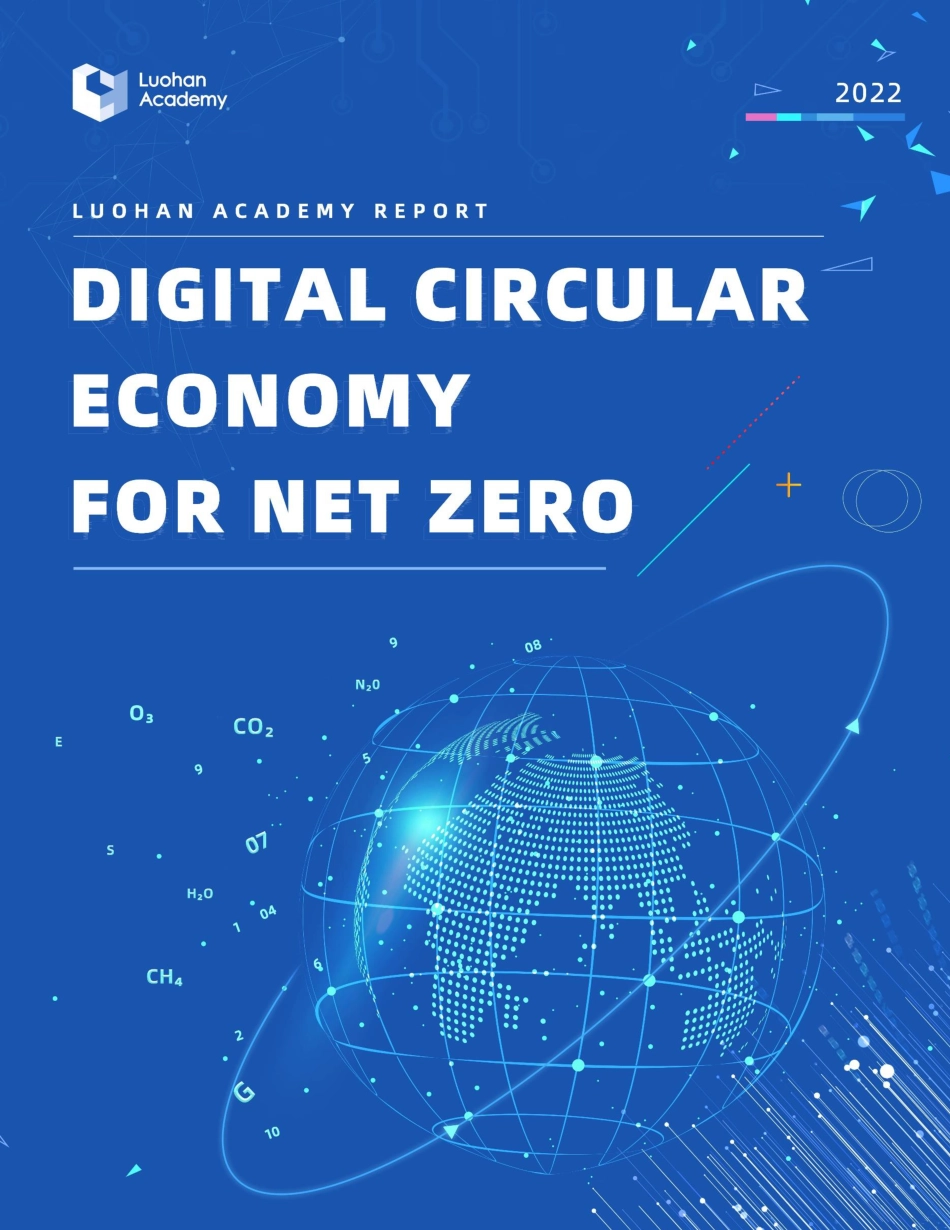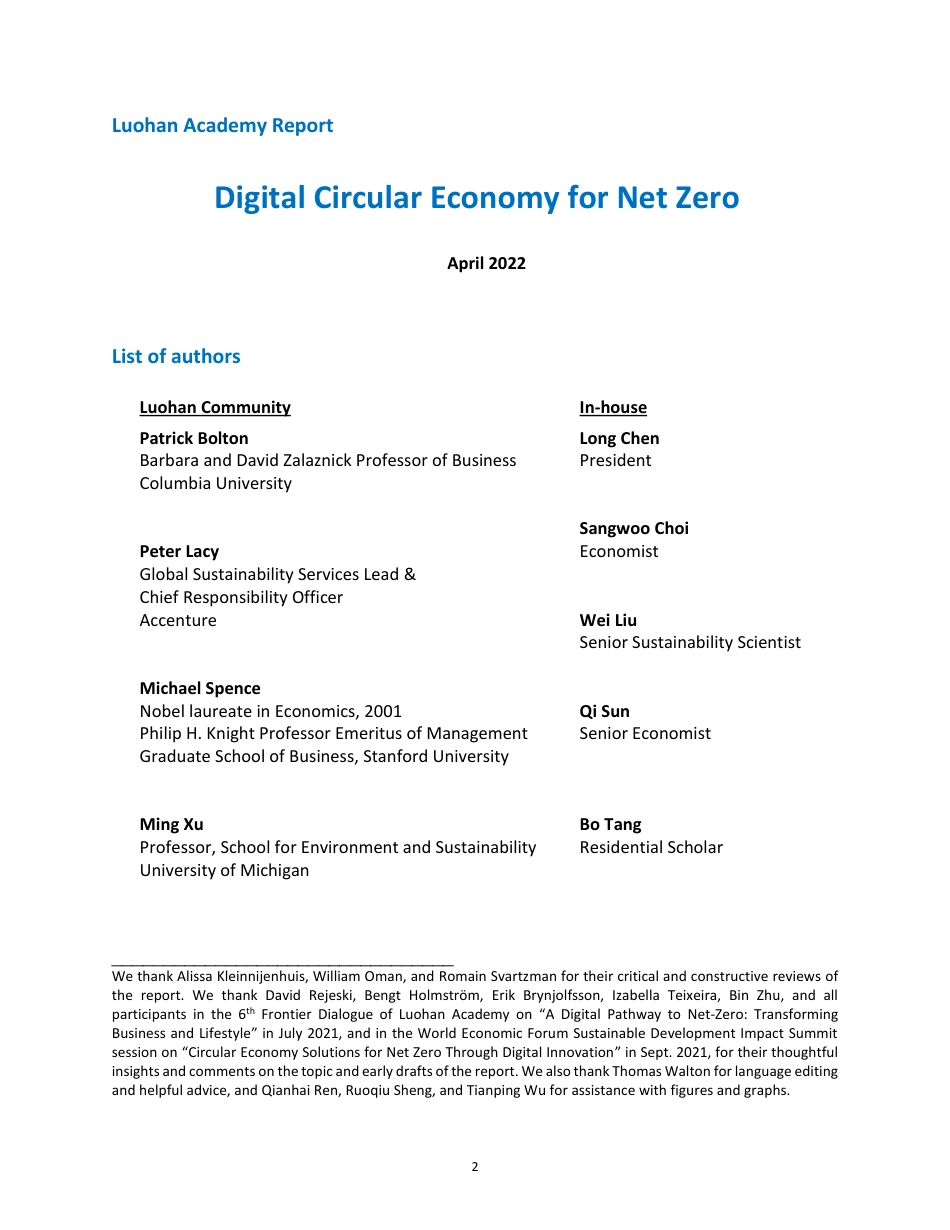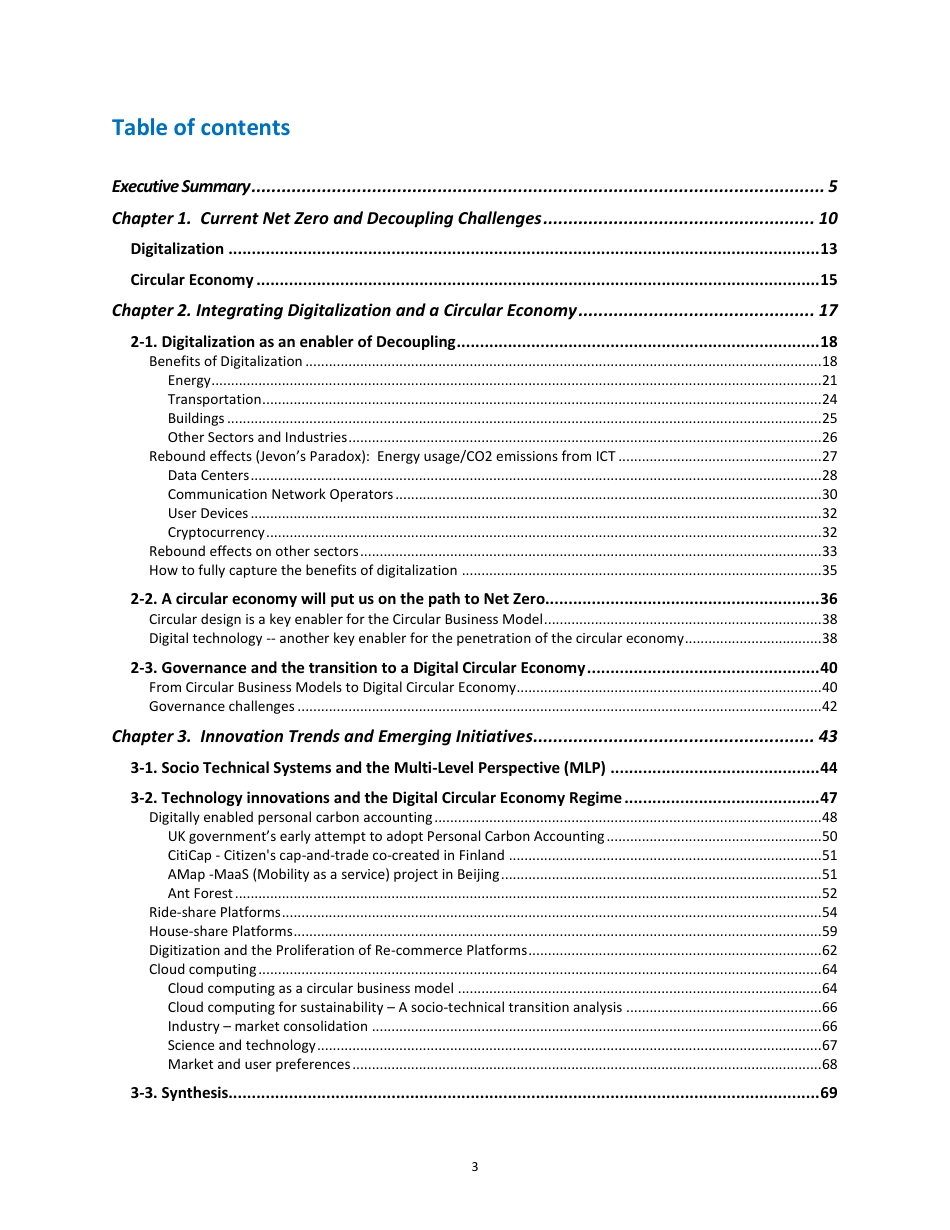2 Luohan Academy Report Digital Circular Economy for Net Zero April 2022 List of authors Luohan Community In-house Patrick Bolton Barbara and David Zalaznick Professor of Business Columbia University Long Chen President Sangwoo Choi Peter Lacy Global Sustainability Services Lead & Chief Responsibility Officer Accenture Economist Wei Liu Senior Sustainability Scientist Michael Spence Nobel laureate in Economics, 2001 Philip H. Knight Professor Emeritus of Management Graduate School of Business, Stanford University Qi Sun Senior Economist Ming Xu Professor, School for Environment and Sustainability University of Michigan Bo Tang Residential Scholar _________________________________ We thank Alissa Kleinnijenhuis, William Oman, and Romain Svartzman for their critical and constructive reviews of the report. We thank David Rejeski, Bengt Holmström, Erik Brynjolfsson, Izabella Teixeira, Bin Zhu, and all participants in the 6th Frontier Dialogue of Luohan Academy on “A Digital Pathway to Net-Zero: Transforming Business and Lifestyle” in July 2021, and in the World Economic Forum Sustainable Development Impact Summit session on “Circular Economy Solutions for Net Zero Through Digital Innovation” in Sept. 2021, for their thoughtful insights and comments on the topic and early drafts of the report. We also thank Thomas Walton for language editing and helpful advice, and Qianhai Ren, Ruoqiu Sheng, and Tianping Wu for assistance with figures and graphs. 3 Table of contents Executive Summary .................................................................................................................. 5 Chapter 1. Current Net Zero and Decoupling Challenges ...................................................... 10 Digitalization ...................



